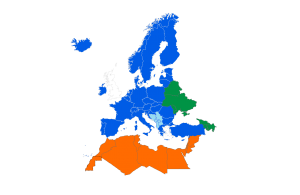ENI East countries: Eastern Partnership Territorial Cooperation Programme

project description
Four Eastern Partnership Territorial Cooperation Programmes (EaPTC Programmes) were established by the European Union to enhance cross border cooperation between Eastern Partnership countries as an instrument to tackle economic disparities between regions and raise the quality of life across the area in a sustainable manner. The EaPTC Programmes cover the land borders between Armenia-Georgia, Azerbaijan-Georgia, Belarus-Ukraine, and Moldova-Ukraine.
We provided an overall independent assessment of the past performance of the EaPTC programme in view of the closure of the programme. An emphasis was placed on results-oriented approaches and the contribution towards the implementation of the SDGs. The assessment was conducted according to the five standard evaluation criteria of the Development Assistance Committee (DAC) of the OECD: relevance, effectiveness, efficiency, sustainability and early sign of impact. Furthermore, issues of gender, environment and climate change were considered. In particular, the evaluation was conducted against the following expected results:
The assessment formed the basis of final recommendations for GIZ and DG NEAR (European Union) for the design of future programmes in the region and sector. The recommendations focused on:
- An established cooperation pattern between the participating countries.
- Cooperation between local authorities, communities and CSOs in the eligible border regions of the EaP countries is increased.
- The capacity of local and regional authorities in the EaP countries to effectively participate in EU-funded programmes is strengthened.
services provided
- Conducted background analysis and stakeholder mapping
- Reconstructed the Intervention Logic including objectives
- Designed the methodology and evaluation matrix
- Analysed risks related to the evaluation methodology and mitigation measures
- Collected data through six field missions to Armenia, Azerbaijan, Belarus, Georgia, Moldova, and Ukraine
- Analysed data to provide formulation of overall assessment, conclusions and recommendations
- Managed stakeholders through kick-off, debrief and final meetings in Brussels and Tbilisi


